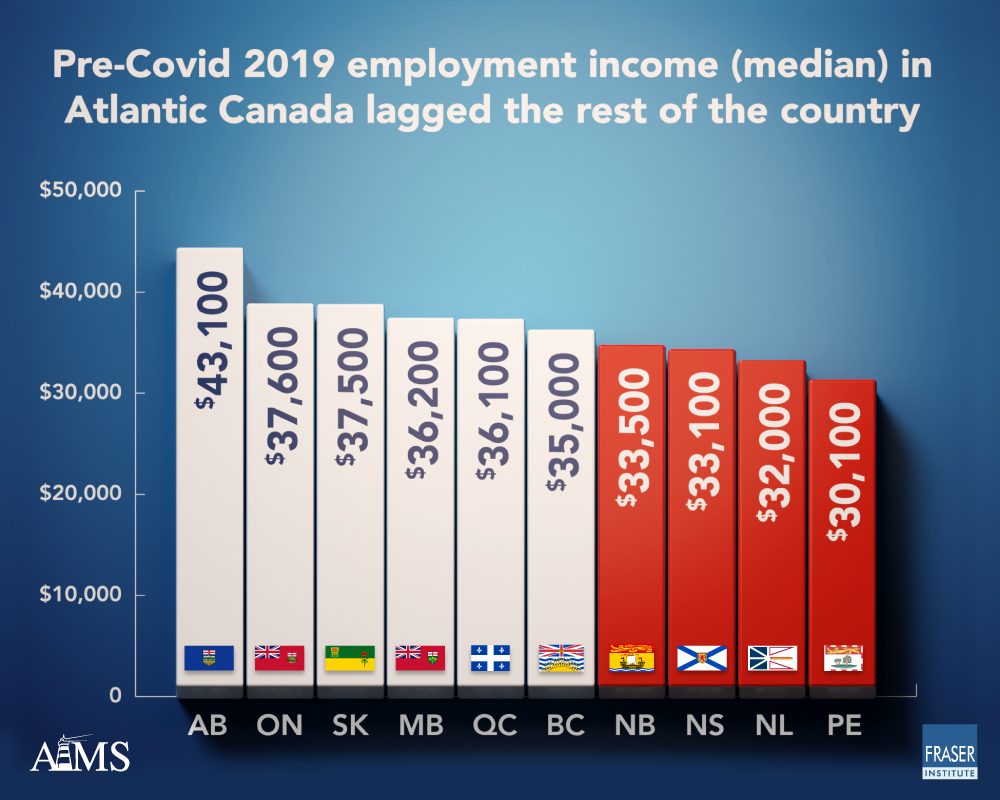Atlantic Canada lags behind rest of country on key employment indicators

According to past research, the Atlantic region lags the rest of Canada on many economic indicators. Specifically, one study found that in 2019 (the final year of data not skewed by the COVID recession), Gross Domestic Product (GDP) per capita was 18.4 per cent higher in the rest of the country compared to Atlantic Canada.
A more recent study looked at employment income for the median worker in each province. The findings help illustrate some of the region’s economic challenges. As the infographic below shows, the four Atlantic provinces had the four lowest levels of median employment income in Canada (which includes wages, salaries, commissions and self-employment income).

Prince Edward Island had the lowest level in the country ($30,100) followed by Newfoundland and Labrador ($32,000), Nova Scotia ($33,100) and New Brunswick ($33,500).
The gap between the Atlantic provinces and the rest of the country is substantial. Across the rest of Canada taken as a whole, median employment income was $36,850—or 10 per cent higher in the rest of Canada (ROC) excluding the Atlantic region than in New Brunswick, the highest performing Atlantic province.
According to the study, additional indicators similarly suggest a weaker labour market in Atlantic Canada than in the rest of the country. From 2011 to 2019, all four Atlantic provinces had a higher unemployment rate than the ROC every single year. In the most recent year (2019), the unemployment rate in the Atlantic region was 8.7 per cent compared to 5.5 per cent in the ROC.
This gap between ROC and Atlantic Canada has generally been steady over the past decade, ranging from a low of 2.8 percentage points in 2011 to a high of 3.8 percentage points in 2017.
An examination of the overall employment rate (which is different than the employment rate) tells a similar story. The employment rate measures the share of all adults in a jurisdiction who are working. Even after making an adjustment for demographic differences, there was a higher employment rate in the ROC than in Atlantic Canada throughout the analysis period. The ROC had a higher core age (25 to 54) employment rate than Atlantic Canada every year from 2011 to 2019, with the gap ranging from 3.3 to 6.0 percentage points.
Past research has demonstrated the existence of a “prosperity gap” between Atlantic Canada and the rest of the country. The latest research summarized here helps illustrate how key indicators of labour market performance reflect this prosperity gap. Whether you look at median employment income, the unemployment rate or the employment rate, throughout the 2010s Atlantic Canada lagged far behind the rest of the country.
Author:
Subscribe to the Fraser Institute
Get the latest news from the Fraser Institute on the latest research studies, news and events.

